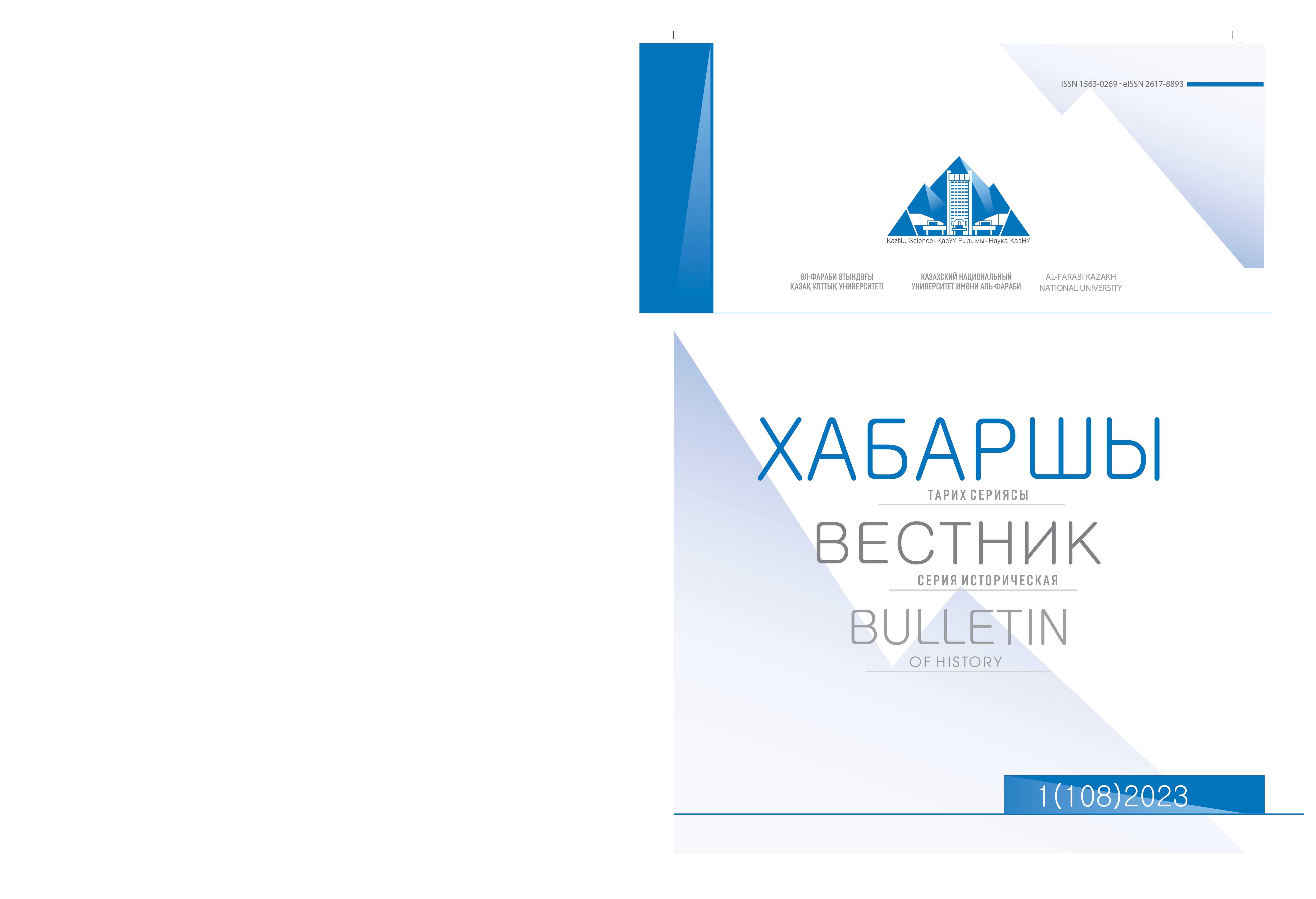НЕКОТОРЫЕ ПРОБЛЕМЫ НАЦИОНАЛЬНО-ТЕРРИТОРИАЛЬНОГО РАЗМЕЖЕВАНИЯ В СРЕДНЕЙ АЗИИ.1920-Е ГГ.
DOI:
https://doi.org/10.26577/JH.2023.v108.i1.09Аннотация
Проблемы национально-территориального размежевания в Средней Азии автор предлагает анализировать в контексте общего процесса формирования федеративного облика СССР. Исследователи в бывших советских республиках и за рубежом в настоящее время внесли ряд пояснений и дополнений в изучение сложного круга вопросов по названной проблеме, но дискуссии о целесообразности, методах и результатах нациестроительства в советском его варианте для народов современной Центральной Азии остаются актуальными. Оценки историков нередко остаются полярными – от обвинений большевистской власти в нанесении непоправимого ущерба народам до признания прогрессивной роли создания республик, которые практически в том виде, какой сложился в 1920-1930-е гг., стали самостоятельными государствами после 1991 года. Изучение фактов и документов позволяет выделить важную роль местных этноэлит в создании бывших советских республик Средней Азии и Казахской АССР, специфику внутрирегиональных социально-экономических и культурных связей, сложности и противоречия в переходе от традиции к модерности. Культурная сложность общества, множественный характер идентичности представителей разных народов, политические и этносоциальные компоненты в их динамике и взаимодействии предопределили неоднозначные итоги размежевания и историческую инерцию их влияния на развитие и взаимоотношения современных государств региона.
Ключевые слова. СССР, этнонациональная политика, нациестроительство, Средняя Азия, национально-территориальное размежевание




